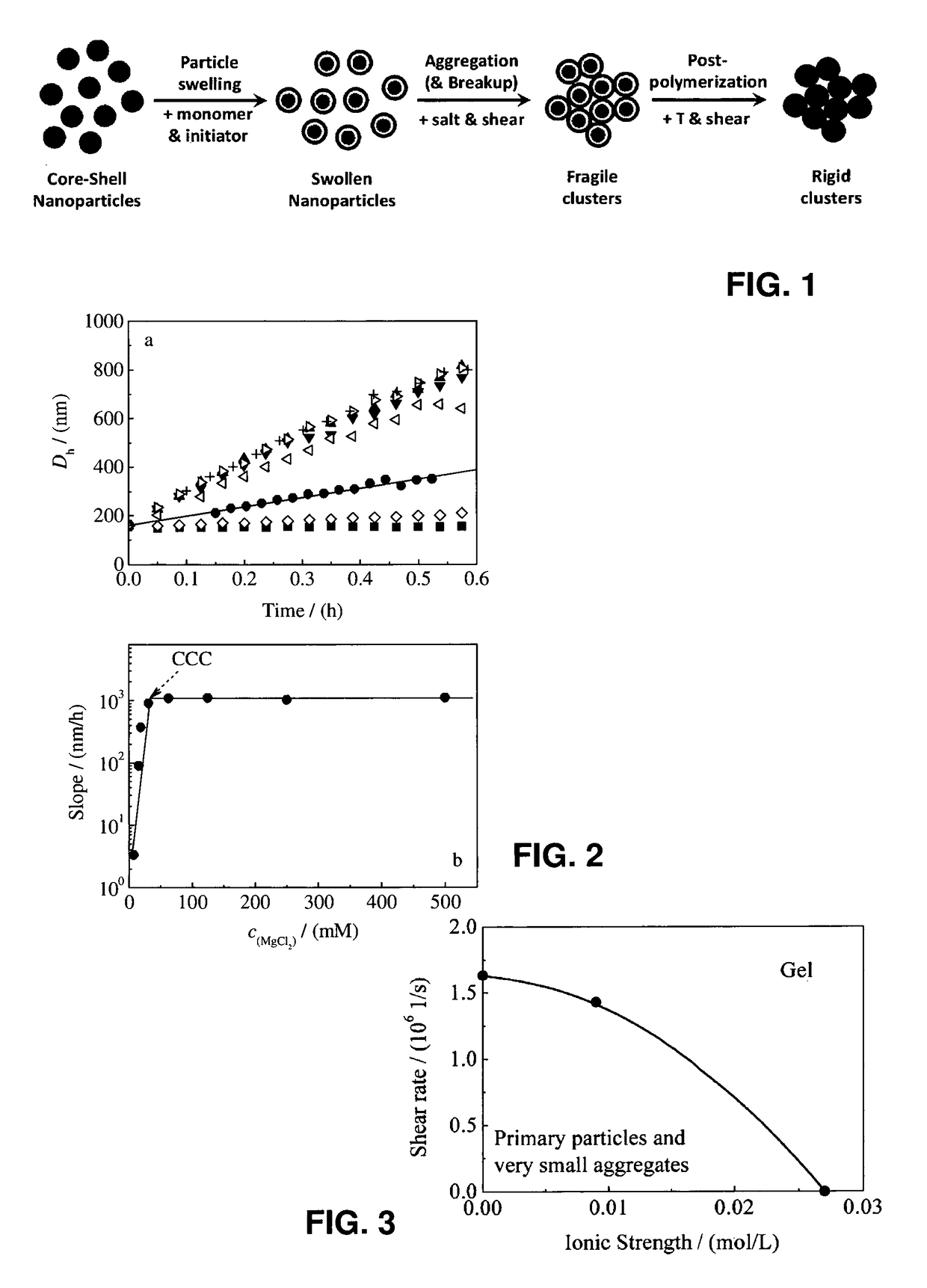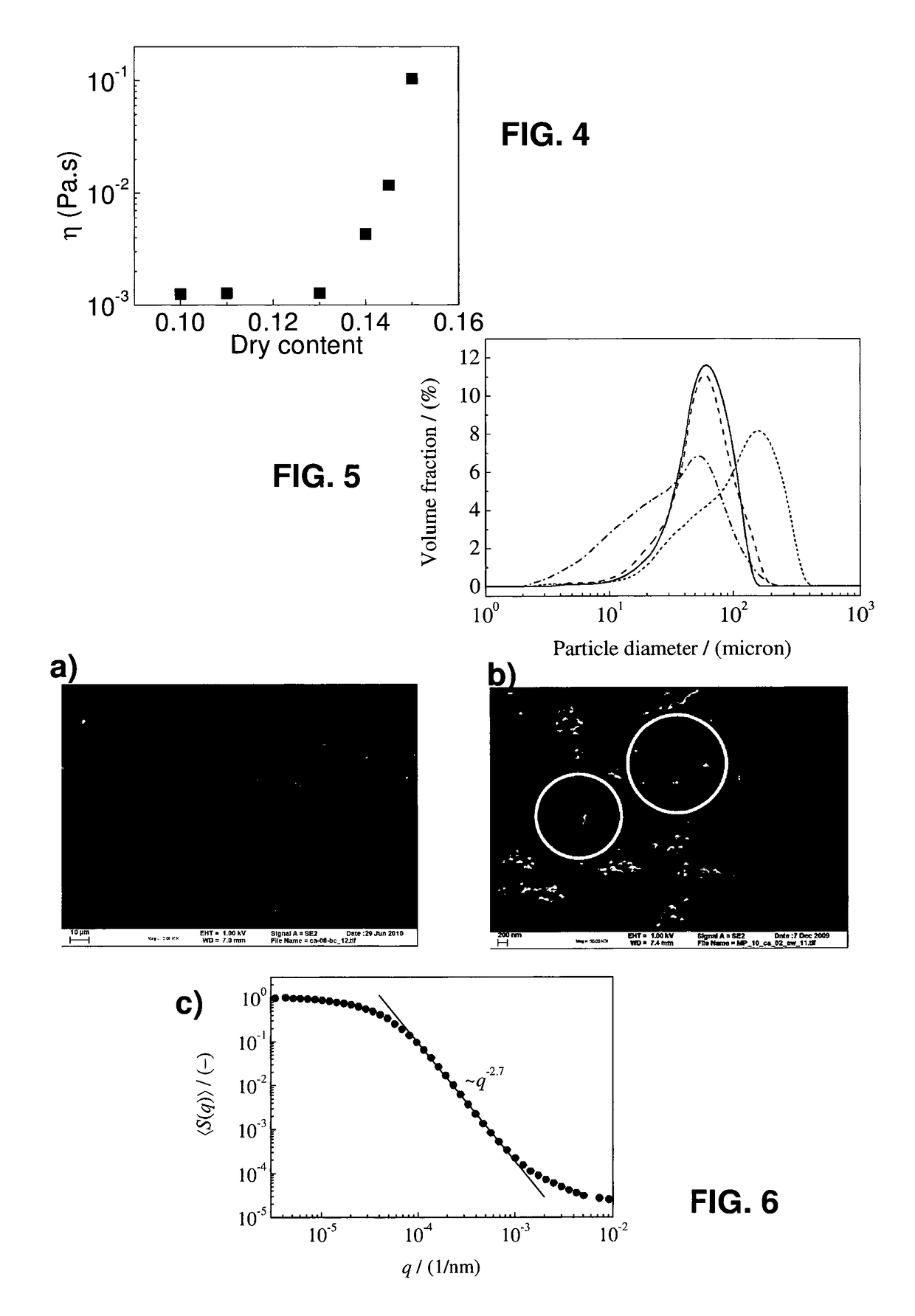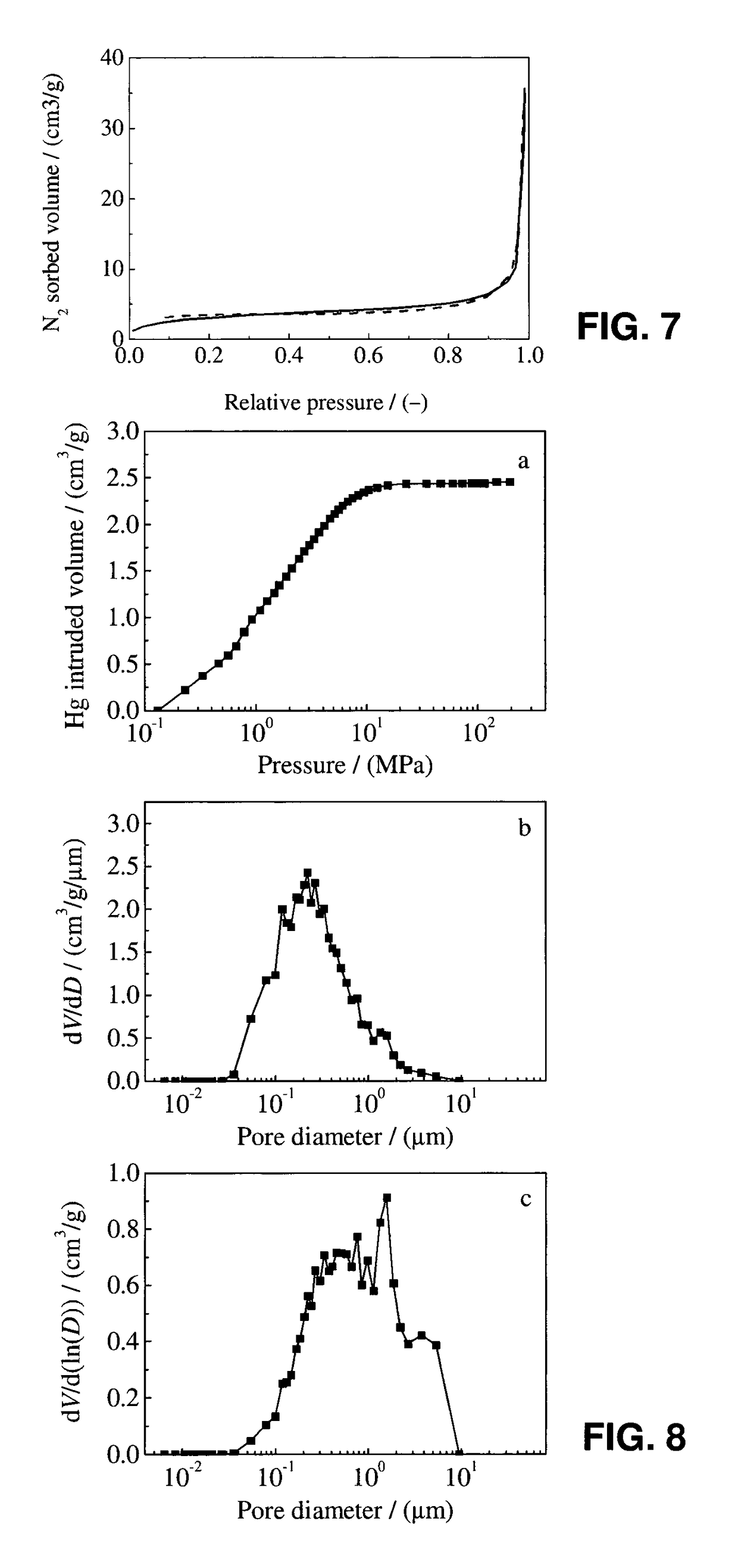Method for the preparation of macroporous particles and macroporous microclusters
a macroporous particle and microcluster technology, applied in the field of macroporous particle preparation, can solve the problems of cluster formation and increase in siz
- Summary
- Abstract
- Description
- Claims
- Application Information
AI Technical Summary
Benefits of technology
Problems solved by technology
Method used
Image
Examples
Embodiment Construction
[0079]In the following, a series of in particular polystyrene-based particulate resins are prepared in order to investigate the effect of initial latex properties, namely primary particle size, crosslinking degree along the particle radius and operating parameters, namely applied shear rate, on the final characteristics. In particular, the particle size distribution, the surface morphology, the specific surface area, the pore volume and pore size distribution have been investigated. For the sake of comparison a monolith was also produced by stagnant reactive gelation and subsequently characterized in the same way.
Materials:
[0080]All chemicals were used as received. Styrene (St, Fluka, >99%), 4-vinylbenzyl chloride (Aldrich, 90%), methyl methacrylate (MMA, ABCR, 99%), glycidyl methacrylate (GMA, TCI, >95%), vinyl acetate (VAc, Aldrich, >=99%), the crosslinkers divinylbenzene (DVB, Fluka, ˜80%) and ethylene glycol dimethacrylate (EGDMA, Merck, for synthesis) and the functional ATRP in...
PUM
 Login to View More
Login to View More Abstract
Description
Claims
Application Information
 Login to View More
Login to View More - R&D
- Intellectual Property
- Life Sciences
- Materials
- Tech Scout
- Unparalleled Data Quality
- Higher Quality Content
- 60% Fewer Hallucinations
Browse by: Latest US Patents, China's latest patents, Technical Efficacy Thesaurus, Application Domain, Technology Topic, Popular Technical Reports.
© 2025 PatSnap. All rights reserved.Legal|Privacy policy|Modern Slavery Act Transparency Statement|Sitemap|About US| Contact US: help@patsnap.com



